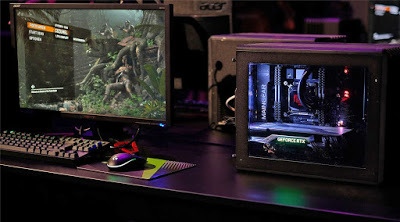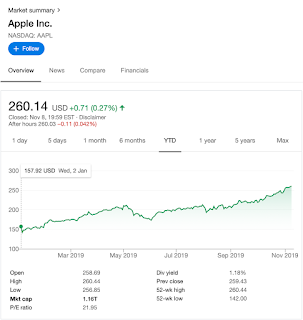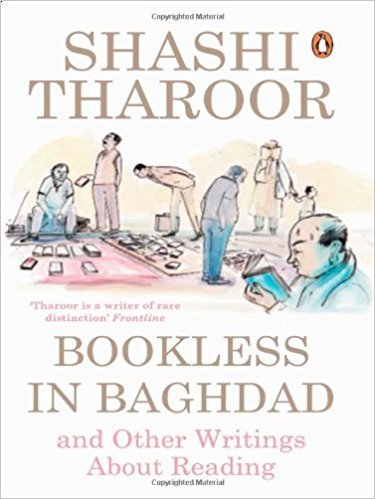Shashi Prakash's Blog: Connecting The Dots, page 2
November 24, 2019
Unemployment, LFPR and Double Whammy

India's unemployment rate (Urban: 9.3% Jan-March 2019) has been increasing in recent years. And I am sure that you must have come across this article and we will not try to debate on the same. But there is one interesting thing to notice about. So the methodology used for the report quoted here is called the "current weekly status" method which gives an average picture of unemployment in a period of 7 days preceding the survey period. A person is considered unemployed in a week if he did not work even for 1 hour during that week. Now the unemployment rate is determined by dividing the number of unemployed people with the people actively seeking a job. LFPR (Labor Force Participation Rate) may be taken as the proxy for the denominator which is the section of the working population in the age group of 16-64 in the economy currently employed or seeking employment.But the irony is that the LFPR (64% in 2004-05; 49.8% in 2017-18) in itself is decreasing in India which is a grave matter of concern than the unemployment rate itself. Because that would mean that even when a lesser proportion of people are seeking a job, a higher proportion of them are not getting one. This is what has been termed as Double Whammy by Mahesh Vyas, CEO of CMIE.
References:
1. Business Standard TUESDAY, 19 NOVEMBER 2019, Mumbai City Edition 2. https://www.google.com/search?client=safari&rls=en&q=urban+unemployment+rate&ie=UTF-8&oe=UTF-83. https://equitablegrowth.org/declining-labor-force-participation-rate-causes-consequences-path-forward/4. https://www.youtube.com/watch?v=oIS-PynsP6c
#SundayNewletter
Published on November 24, 2019 08:14
November 20, 2019
Dungeon Dragons and Netflix.

Virtual economy is an emergent economy existing in a virtual world, usually exchanging virtual goods in the context of an Internet game. Now we are talking of an economy worth $160 Billion that does experience the dynamics of real economics. I mean, the prices of items do fluctuate as per the demand and supply convention, have an exchange rate, and even experience hyperinflation (Diablo III Auction House). We are talking about the items like a special sniper available for a price in games like Counter-Strike, skin, stickers, or surf boost that you may get while playing Subway surfer. People are buying these stuff with real money. Virtual markets for In-game goods for a 2018 estimate is roughly at $ 45-49 Billion while the Global box office collection for that year was worth $ 41.1 Billion(Just to put in perspective). Well, that’s how Pokemon Go made $795 million of revenue in 2018 even though you didn’t pay a cent for downloading it. (Freemium Model)
Recently I came across a group that had two exciting opinions on Reddit: 1. Disney Plus is not a competitor to Netflix. If a person wants to stream House of Cards, Stranger things, or something similar, he will go for Netflix. Period. It's more about the content than the platform. 2. Twitch (Video live streaming service) is a real threat to Netflix. An average twitch user spends 95 minutes daily on the platform, keeping you hooked. That’s what is making these streaming platforms a kind of worried. (Twitch was acquired by Amazon in 2014 for $ 970 Mn)
Games are changing the landscape. Google Stadia got launched on November 19, 2019. The concept of playing heavy games right away from your chrome browser without downloading the actual content (size of GBs) irrespective of whether you have an i3 machine or i5 is very fascinating and a real deal. Google is also exploring further ways to reduce latency, using an idea called "negative latency," which involves prediction of user input through various means so that any apparent network lag between controller and game response is minimized. The service has received mixed reactions, but it will get improvised for sure, given that expertise that Google does have with their software arm.
The gaming industry is already making a lot of waves in the contemporary world. China has announced a curfew on online gaming for minors to curb video game addiction. Under the new rules, gamers aged under 18 will be banned from paying online games between 10 p.m. and 8 a.m. On weekdays, minors can only play for 90 minutes, while they may play up to three hours per day on weekends and public holidays. A heavy blow to Tencent, perhaps.
Though a lot of behavioral science goes in behind the scenes. Now we all know that you never purchase any kind of item with real cash. You buy virtual coins/gold bar at a certain exchange rate by paying real cash. And then with those coins/gold, you purchase the in-app goods. When you pay cash for something, you see it leave your hands, and you get a very immediate sense of depletion, but while paying for cards, that’s already saved in your google account, you tend to spend more in comparison to real cash for the same utility and item. Also, developers do analyze the data about the time stamp when the users closed the application or game. The developers try to answer these questions: Did the user quit because the level was difficult? They are unable to kill the dragon or what? The pain points are analyzed, and developers then may incentivize you to keep on playing by offering that the entire level may be skipped by paying this amount, or you may unlock a special weapon at this stage.
Some of the other facts are:
a. 2018 DOTA 2 Int’l prize money was $ 25.2 Million, and that puts it ahead of Daytona, Tour de France, or even US Open (Golf) in comparison to prize money.b. Global e-sports audience is approaching 500 million by the end of FY202c. According to TwitchTracker, 560 billion minutes of Twitch was watched over 2018 – rising from 255 billion minutes in 2017 – an increase of 58%. And that’s too when the site is banned in China.
The bottom line is this simple line that Mr. Ben Gilbert used in his article on Business Insider.
“I've been playing games on Google's ambitious new Netflix-like game service for the last week, and it's clear the service isn't ready for primetime.”
So if a person got hooked, he would be less switching for media content. Right? And if he got caught again, would he buy all those Predator, Razor, ROG series? And I would conclude by quoting, “Are you getting it?”
References:
1. https://www.businessofapps.com/data/twitch-statistics/2. https://www.investopedia.com/investing/how-does-twitch-amazons-video-game-streaming-platform-make-money/3. https://www.google.com/search?client=safari&rls=en&q=pokemon+go+revenue+2018&ie=UTF-8&oe=UTF-84. https://www.theverge.com/2019/11/18/20970297/google-stadia-review-gaming-streaming-cloud-price-specs-features-chrome-pixel
5. https://www.youtube.com/watch?v=ZBxvAE_ux9U&vl=en
Published on November 20, 2019 09:21
November 16, 2019
Tweets that Shook Fortune 500 Companies

1. Tencent:Daryl Morey (General Manager of Housten Rockets) on 04 October 19:Tweet: “Fight for Freedom, Stand with HongKong” As Yao Ming from Shanghai, China was selected for Housten Rockets for the 2002 NBA, things changed forever for Basketball as a game in China. It Boosted the league’s popularity. The following data very explicitly do the talking: 2015: Tencent acquired exclusive digital streaming rights for NBA games in a 5-year contract worth $500 million ($100 million per year)2019: The tech giant extended the rights to 2025; Contract worth $1.5 Billion ($ 300 million per year)Viewership for NBA Games in China (650-750 million) is almost 5-6 times that of the US (90-110 million). Just for a comparative perspective, IPL Season 2019 had a viewership of 462 million, and the entire population of the US is 372.2 million. But the tweet didn’t auger well. Chinese Consulate in Housten responded by saying that they were ‘deeply shocked by the erroneous comments on HongKong’ For the damage control, Mr. Morey took down the tweet, players apologized and expressed their love for China and their fanbase. But perhaps it was too late. Smartphone Maker VIVO, broadcaster CCTV, and internet giant Tencent suspended all cooperation with the NBA or Housten Rockets itself. This had a significant impact on Tencent as a listed company. Alibaba ($ 435 Bn) and Tencent ($ 398 Bn) are just the 2 Non-US and Chinese companies that make into the US-dominated ‘List of public corporations by market capitalization.’ With the recent developments, the gap with Alibaba has widened much further.
China has made it very clear that they don’t like others to meddle in their issues like HongKong or 3T (Taiwan, Tibet, and Tiananmen). There is a price that needs to be paid if done so, and now there lies a risk of importing Chinese Censorship along with profit that organizations look forward to reap because of the presence of 1.4 Billion people that China has and can really make a difference.
2. Tesla:Elon Musk (Needs no introduction) on 07 August 2018: Tweet: ‘Am considering taking Tesla Private at $420. Funding secured’His tweet “set off a trading frenzy,” and pushed Tesla’s stock price up more than 6 percent, forcing Nasdaq to halt Tesla trading for 90 minutes until the company gave an official response. The company’s stock price hit the intraday high of $387 before closing at $379.57 on the day of the tweet. It's currently trading at 350.43 (As of 7:37 pm GMT, 14th November 2019) The US Securities and Exchange Commission (SEC) sued Mr. Musk after his tweet. The SEC later claimed that the tweet was “false and misleading.”
Outcome: Mr. Musk was directed to step down as chairman. Paid a fine of 40 million. Appointed 2 independent directors; Was directed to get his tweets reviewed before posting.As the public face of Tesla, Musk had gained legions of fans for his bold approach to business and technology, and it can be expected that he is going to be around Tesla for many years to come. This is in the interest of the company also. In the recent Bloomberg survey, a question was asked to around 5000 Tesla owners. Question: Did the opinion of Elon Musk influence purchases? 55.4 percent responded affirmative (30.8 percent- strongly agree, 24.6% agree).
3. Apple:David Heinemeier Hansson (partner at Basecamp, a web-based software development firm on 07 November 2019 Tweet: “The @Applecard is such a f*****g sexist program. My wife and I filed joint tax returns, live in a community- property state, and have been married for a long time. Yet Apple’s black box algorithm thinks I deserve 20x the credit card limit she does. No appeal work.”Steve Wozniak, too, responded on the same affirming that he and his wife also had experienced something similar. The tweet garnered much attention The apple credit card launched in partnership with Goldman Sachs earlier this year uses an algorithm to assign credit limits, and many online pointed out that it may favor men over women. The issue has been taken into, and has led to an investigation from New York’s Department of Financial Services over the issue of gender discrimination. An interesting thing happened when I was reading about Mr. David. He is a Le Mans Class-winning racing driver. And co-incidentally I happen to be at Le Mans circuit currently as I am posting this on my blog.
Mr. David can be reached @dhh on Twitter and is unavailable at other social media platforms.
Note:
a. The viewership data quoted are subject to much of deviation depending on the methodology adopted and source choose. I have tried to get a median number for higher degree of accuracy. b. Mr David in his tweet had used the full 'f' work instead of using * symbols
References: 1. https://en.wikipedia.org/wiki/List_of_public_corporations_by_market_capitalization2. https://dhh.dk3. https://www.marketwatch.com/story/new-york-regulator-probes-apple-card-algorithms-for-gender-bias-after-viral-tweets-2019-11-094. https://www.google.com/search?client=safari&rls=en&q=population+of+US&ie=UTF-8&oe=UTF-85. https://www.youtube.com/watch?v=GHpFjtuAYLQ6. https://www.google.com/search?client=safari&rls=en&biw=1440&bih=837&tbm=isch&sxsrf=ACYBGNRvzvj8FA9EpwKiUxfSVyqwaiKe7w%3A1573769513232&sa=1&ei=KdHNXdLsDfHQxgOkl5zADw&q=twitter+and+companies&oq=twitter+and+companies&gs_l=img.3...478280.482133..482775...2.0..0.161.1232.22j1......0....1..gws-wiz-img.......35i39j0i67j0j0i8i30j0i24.MoYkgxyPiik&ved=0ahUKEwiSpa2m3OrlAhVxqHEKHaQLB_gQ4dUDCAY&uact=5#imgrc=UazTxIe5l0STlM:
Published on November 16, 2019 08:39
Profit, Parliament and Privacy

The Parliament session is scheduled from November 18 to December 13. And there is one crucial bill, pending that’s going to affect each and everyone in some manner.
“Personal Data Protection Bill”
The report drafted by Justice BM Srikrishna committee, which also had our former director of IIM Indore, Prof. Rishikesh T Krishnan as a member too, has heavily influenced the bill, though there are remarkable deviations too which will not be explored in this article. The report may be found here: https://meity.gov.in/writereaddata/files/Data_Protection_Committee_Report.pdf
The proposed law mandates storing of personal data within the territory of India requires to obtain explicit consent from the users to collect and use their data and proposes of setting up of Data Protection authority to decide on violations of a data breach. It also proposes a fine of Rs 15 crore or 4% of the firm’s turnover in the case of a breach.
A circular mandating all payment companies to store data of Indian customers within India has already been issued by RBI and is in effect. The companies affected were because of this norm were: Visa, Mastercard, Infosys, Paytm, Flipkart, Google, and many more.
Current Status:
1. A 2018 survey found that 52% of Indian companies with $100 Mn-$1 Bn revenue reported a data breach.2. India digital economy is worth $200 Billion with a strong reported growth 3. The recent report of NSO, an Israeli Surveillance firm being sued by WhatsApp for breaking into phones of roughly 1400 users across 4 continents, created a stir. 4. Assessing privacy and state of surveillance in 47 countries, UK-based Comparitech in a study this week placed India among the bottom five non-EU nations when it comes to protecting the privacy of its citizens.
The report highlights such · Its Data Protection Bill is yet to take effect and there isn’t a data protection authority in place, meaning privacy protections are weak at present· The Aadhaar Identification Scheme gives citizens a unique ID number and is also home to the largest biometric database, which contains 1.23 billion people· This database also contains information such as purchases, bank accounts, and insurance· Trying to get WhatsApp to make messages traceable by adding a digital fingerprint to every message sent· CCTV isn’t regulated, and any privacy laws relating to it are very vague and open to interpretation· 10 government agencies have recently been given the authorization to decrypt, monitor, and intercept data on any computer (but this must be approved by the Home Secretary)· Should service providers fail to offer intercept capabilities, they could face prison for up to seven years· Looking to install hi-tech border surveillance at certain borders· Frequently shares information with the US and has multiple Mutual Legal Assistance Treaties with different countries· Ranks 140th in the world for the Press Freedom Index with 6 journalists (at least) being killed in 2018.”
(The highlights are the excerpt of the report which can be accessed here: https://www.comparitech.com/blog/vpn-privacy/surveillance-states/ )
Cons:
1. The EU, which was successful in passing and enforcing the world’s first data privacy law, the General Data Protection Regulation (GDPR), described India’s overall data localization requirements in the draft Personal Data Protection Bill as “unnecessary, harmful, and likely to have negative effects on trade and investments.”2. Using advances productivity measures such as firm-level and industry level, Total Factor Productivity & Labor productivity, ECIPE tried to calculate the impact of such stricter data policies on the sectors and industries reliant on data. If similar calculations are assumed for the Indian economy, the current draft Personal Data Protection Bill could cost India nearly $8.4 billion (60350 cr) annually. For the perspective, Reliance industries, annual profit clocks roughly at 35000 cr. The report can be found here: https://ecipe.org/blog/the-cost-of-data-protectionism/3. Increases the cost of operation by 30 percent, making overseas companies unhappy.
JioMoney and Paytm are more vocal about the same while US giants are crying foul. An interesting fact is that investors such as Berkshire Hathaway, SoftBank, and Alibaba have backed Paytm with significant funding. It would be interesting to follow the recent developments and their impact on Indian Landscape.
References:
1. https://inc42.com/datalab/heres-how-indias-data-localisation-norms-will-hurt-the-economy/2. https://www.comparitech.com/blog/vpn-privacy/surveillance-states/3. https://www.google.com/search?client=safari&rls=en&q=india+digital+economy+size&ie=UTF-8&oe=UTF-84. http://www.mondaq.com/india/x/860598/Data+Protection+Privacy/The+Right+To+Be+Forgotten+Under+The+Personal+Data+Protection+Bill+20185. https://scroll.in/article/940863/after-russia-and-china-india-is-the-third-biggest-surveillance-state-in-the-world
Published on November 16, 2019 08:37
November 10, 2019
The Curious Case of Apple, Twitter and Joseph Tieffenthaler

Apple has regained the title of the ‘World’s Most Valuable Listed Company’. The surge in the stock from $157.92 to $260.14 makes up of $ 398 Billion dollars in value, year to date in 2019 and that’s like the entire market cap of JP Morgan Chase & Co (408.93 Bn to be precise as of 7:28 PM, (GMT) November 10, 2019)Their services arm has brought $46 Billion of revenue YTD, and they do understand that services are less cyclical, pregnant with higher margins. Products can’t keep the match of services. The replacement cycle has slowed down because the prices of smartphones have exceeded. They are on par with some of the good laptops in the market. People are waiting for 5G update. And the reasons may just pile up.
Their sincere attention for services domain may be exhibited by this timeline:
August 2019: Apple Card - The cashback (3-2-1) Model, wide acceptance of the payment mode across US Retail stores, and the embedded safety features have really been appreciated. The mode doesn’t share the actual credit card number to the retailer, but it shares a device number generated specific to your iPhone device.
September 2019: Arcade - Video game subscription service
November 2019: Apple TV Plus - It is an over-the-top ad-free subscription video-on-demand web television service. Their move of letting apple device owners (purchased after Sept 10: The very concise terms and condition may be read here: https://www.apple.com/promo/pdf/EN_US_ATV+_Promo_TandCs.pdf) use the service free for a year is definitely going to entice users to continue watching, and for some to eventually pay for a subscription, as new series are released. Though made on a whopping budget of $ 300 Million, Jennifer Aniston, Reese Witherspoon, and Steve Carell starrer ‘The Morning Show’ received mixed to negative reviews.
Their recent iPhone launch, Tim Cook announcing that the iPhone 11 is the best-selling iPhone of all time, the launch of new air pods are a few of the other stuffs that we have not covered here. But there is a nice video which clearly explains as if what makes
“Perfect, well-built Apple Product.” What’s meant by that? Now, this is something I would really encourage you to watch. This is a video review from Dave Lee. What is the core competency of wireless earphones? Sound & Noise cancellation. Sony wf 1000XM3 is better in both of terms to Apple Airpods Pro. But in the end, Dave calls the pro as a better product. This sums up the real tangible aspect of user experience, and I hope that the video serves the intention. Link: https://www.youtube.com/watch?v=PDdNGsqi1Ho

After a series of tweets in which Jack Dorsey banned the political advertisement, it put Facebook on the back foot. The reason behind so was the stand that Facebook had earlier taken and expressed openly about Political Advertisements. Now it’s not the matter of revenue as Twitter draws only 0.8 percent from this particular type of advertisement while Facebook mentioned that $ 3 million dollars are their share in this. The timings are also crucial because Twitter expressed the same almost as close to Facebook, announcing their Quarter Earning reports. Twitter even took a dig at Mark in one of his following tweets banning political advertisement. He didn’t take name but made statements in the quote :
For instance, it‘s not credible for us to say: “We’re working hard to stop people from gaming our systems to spread misleading info, but if someone pays us to target and force people to see their political ad…well...they can say whatever they want!
Published on November 10, 2019 15:28
Curious Case of Apple Inc

Apple has regained the title of the ‘World’s Most Valuable Listed Company’. The surge in the stock from $157.92 to $260.14 makes up of $ 398 Billion dollars in value, year to date in 2019 and that’s like the entire market cap of JP Morgan Chase & Co (408.93 Bn to be precise as of 7:28 PM, (GMT) November 10, 2019)Their services arm has brought $46 Billion of revenue YTD and they do understand that services are less cyclical, pregnant with higher margins.
Their sincere attention for services domain may be exhibited by this timeline:
August 2019: Apple Card - The cashback (3-2-1) Model, wide acceptance of the payment mode across US Retail stores and the embedded safety features have really been appreciated. The mode doesn’t share the actual credit card number to the retailer but it shares a device number generated specific to your iPhone device.
September 2019: Arcade - Video game subscription service
November 2019: Apple TV Plus - It is an over-the-top ad-free subscription video-on-demand web television service. Their move of letting apple device owners(purchased after Sept 10) use the service free for a year is definitely going to entice users to continue watching, and for some to eventually pay for a subscription, as new series are released.
Published on November 10, 2019 12:37
October 24, 2019
Understanding the Nobel Prize Winning Experiment | Blog | Abhijeet Banerjee

Esther Duflo and Abhijit Banerjee, MIT economists whose work has helped transform antipoverty research and relief efforts, have been named co-winners of the 2019 Sveriges Riksbank Prize in Economic Sciences in Memory of Alfred Nobel, along with another co-winner, Harvard University economist Michael Kremer. This is a great moment for all of us as we all cherish and are congratulating the professor for such a remarkable achievement. Being from India, having studied from Presidency college, and having been to JNU gives you hope that an Indian student can go a long shot. I feel that it gives you the courage to dream for things never imagined or never attained before.
The couple talked to the media at an event organized by MIT, after the awards were declared. A very interesting question came from a gentleman which I wouldn't have dared to ask, given that I would have got the opportunity to attend that event. You may say fear of asking or something else but the question was as simple as it could get.
"What you did exactly?" asked the gentleman in his conclusion. You could hear a few giggling in the background.
Esther Dulfo took the opportunity and explained it in a very lucid and remarkable manner. That intrigued me to look more into the same, and here is the summary of the part of the work they undertook and which everyone should be familiar with.
Caution: It’s a long article and feel anytime to skip.
In India, immunization services are offered free in public health facilities, but, despite rapid increases, the immunization rate remains low in some areas. According to the National Family Health Survey (NFHS-3), in India only 44% of children aged 1-2 years have received the basic package. That drops to 22% in rural Rajasthan, the setting of the present study, and was less than 2% in our study area (a disadvantaged population in rural Udaipur).
They were trying to understand the reason behind the immunization rate being so low in parts of India. Their work has been explained in a very lucid manner in the paper “Improving Immunization Coverage in Rural India: A Clustered Randomized Controlled Evaluation of Immunization Campaigns with and without Incentives” published on MIT website.
So, what was the problem?
1. The immunization services were not reliable. Nurses and government officials were not discharging their duty consistently. You travel to vaccinate your child, you reach the PHC to find it closed and you return having the sense that it wasted significant time of yours. 2. Immunization is something that is never on the top of the priority. Families are busy with many works, and if they don’t vaccinate their child this month, there’s always a chance to do the same in the next one. It’s not a kind of an emergency. The opportunity cost may be too high for the families, even if it’s low. So, they teamed up with an NGO called Seva Mandi, and they asked the state government if they can replace them in certain areas of Rajasthan for providing the specific immunization services that the government machinery was already providing. 134 villages were randomly selected, and mentioned interventions were made to test the impact. This sort of trial is known as Randomized Control Trial in which you try to understand if one factor is affecting the other in a pre-conceptualised way or not. This was what Esther Duflo said. Though the Wikipedia page defines the same in a more systematic manner as "A randomized controlled trial is a type of scientific (often medical) experiment that aims to reduce certain sources of bias when testing the effectiveness of new treatments; this is accomplished by randomly allocating subjects to two or more groups, treating them differently, and then comparing them with respect to a measured response.
Intervention A: It focused on establishing regular availability of immunization schedule, which meant that attendance of the nurse and assistant were closely monitored. The timings and schedule were declared ahead; the mothers were educated on the importance/benefits of immunization. In short, all those works done by the pre-existing government machinery were being executed at a high level of efficiency. Intervention B: It used the same infrastructure as Intervention A but in addition offered parents 1 kg of raw lentils per immunization administered and a set of thalis (metal plates used for meals) on completion of a child’s full immunization. The value of the lentils was about 40 rupees (about $1), equivalent to three quarters of one day’s wage, and the value of the thalis was about 75 rupees. Seva Mandir (It is a grassroots NGO based in Udaipur, in the Rajasthan state of India; works mainly in natural resource development and sustainability, village development, women empowerment, early childhood education, health care and welfare) decided to provide lentils, rather than cash, as this was useful to the family and also immediate had nutritional value. The amount roughly corresponds to the opportunity cost of time for the mother. The thalis were chosen as a tangible sign of achievement, while also being of immediate use.134 villages were selected on a random basis. 30 of the 134 study villages were to receive intervention A and 30 to receive intervention B. The 74 remaining villages were control villages and received no additional intervention.

Compared with the control group, immunization rates more than doubled in intervention A villages and increased by more than six times in the intervention B villages. There were no adverse events (severe reaction to immunization) reported in either intervention groups.
Costs: So which method would have been most costlier? Surprisingly, The average cost to Seva Mandir of fully immunising a child was $27.94 (1102 rupees, about £16 or €19) in the reliable camp with incentives and $55.83 (2202 rupees) in the reliable camp without incentives. The difference came from the fact that the camps had to be open from 11 am to 2 pm, regardless of the number of children present. Thus, the higher average number of children in the camps with incentives spread the daily fixed cost (mainly, the salary of the nurse and assistant) over more children. The marginal cost of an extra child being fully immunized with and without incentive in a given camp is, respectively, $6.60 and $1.30. The salaries of the nurse and assistant represented about half of the cost of the camp without incentives. When the same was calculated for the government, had they implemented the same interventions, the result were as follows: the average cost of fully immunizing a child was estimated at $25.18 in camps without incentives and $17.35 in camps with incentives.
On the intellectual side, she mentions that it helped them to understand how small incentives persuaded the general public to take decisions and their understanding of the public health care system. Now replicate the same experiment to different sets of people across 80 countries, and that's what more or less, J-Pal has been doing, which was founded in 2003 by Abhijit Banerjee, Esther Duflo, and Sendhil Mullainathan. As per wiki, J-PAL was established to support randomized evaluations measuring interventions against poverty on topics ranging from agriculture and health to governance and education. The Lab was renamed in honor of Sheikh Abdul Latif Jameel when his son, MIT alumnus Mohammed Abdul Latif Jameel, supported it with three major endowments in 2005.
Note: The work has been reproduced and restructured to make it more comprehensible. The paragraphs have been clipped from various sources, and there are strong chances that errors might have crept it. Apologies for the same in advance. Here are the references for the article.
Published on October 24, 2019 17:07
October 11, 2019
Google Maps and An issue with the same
Maps is really good. They have reached out to every single street on Earth perhaps and their strong team of Google guides who volunteer to add much information to each and every place has really made the Google maps an indispensable part and parcel of life. But, today I got at Versailles Chantier. I wanted to get to La defense and there was no train at all. Ironically the map was still showing the train schedule. It should be corrected and looked upon perhaps. Integration of the apps with the information furnished by the government agencies on a regular basis and in a short time interval. Also, I am talking about Paris, the most visited city in the world. The adoption of the same should definitely start from this place for sure.
Published on October 11, 2019 12:11
May 12, 2018
Review: "The Blue Umbrella" by Ruskin Bond

Book: The Blue Umbrella Author: Ruskin BondType: Fiction
Pages: 82
Publishing House: Rupa Publication
There were three things that prompted me to order this book:
1. Ruskin Bond
2. Catchy Title
3. My Amazon pay balance was just a bit more than its price :D
The package got delivered on 25th September 2017 and I was so disappointed. It had just 88 pages with font sizes of somewhere between 14-15 points. Even the dimensions of the product that Amazon shows were not anything near to okay. There were pencil sketches on few pages just to illustrate the developments.There were seven chapters or parts of the book.
I read it in one stretch. And in the end, I was more than just satisfied. It was a great, short and sweet story. After reading the book, I googled the same and that was when I came to know that a film based on the book of the same name had already been released in 2005. It was directed by Vishal Bhardwaj. The film also received National Film Award for Best Children's Film in 2005.
Plot:
The story revolves around the girl named Binya. "Binya belonged to the mountains, to this part of the Himalayas known as Garhwal." She lives with her mother and her brother - Bijju. She often grazes her cattle around valleys and returns to home by evening. One day she finds 'holiday-makers from the plains' picnicking on the spur of the hill. She spots an umbrella. "The umbrella was like a flower, a great blue flower that had sprung up on the dry brown hillside" She trades her pendant (tiger's claw) for the umbrella and finally she owns it. The only shop owner of the village 'Ram Bharosa' gets jealous of the umbrella and wants to seek one. In fact, everyone in the village wants to have an umbrella of that kind. Binya never leaves her umbrella and always carries it wherever she goes. Ram Bharosa offers money to Binya for the same but she refuses it. After a while, Ram Bharosa employs a boy named Rajaram for all washing up and various errands. He senses his masters' desire for the umbrella and asks whether he would pay him extra if he managed to get him the umbrella. Ram Bharosa agrees and Raja Ram plots to steal the umbrella.
But it ends in a fiasco. He is ultimately caught by Bijju and Raja Ram speaks up about Ram Bharosa and how he wanted the umbrella so bad. Everyone in the village cames to know about the evil plot and they stop going to Ram Bharosa's shop. Villagers now used to walk an extra mile to another shop for their daily needs. Ram Bharosa repents over his actions. In the end, Binya herself walks into his shop for toffee and then gives her umbrella to Ram Bharosa. She says that she doesn't need the umbrella anymore. In return, Ram Bharosa gets her a new Tiger Claw pendant. The villagers' starts to walk in his shop again.
"She walked home through the darkening glade, singing of the stars; and the trees stood still and listened to her, and the mountains were glad."
Verdict: As of now, it's of Rs 50 on Amazon.in. It is worth of every penny spent.
Published on May 12, 2018 09:24
Review: "Bookless In Baghdad" by Shashi Tharoor

Book: Bookless In BaghdadAuthor: Shashi Tharoor
Type: Non-Fiction Pages- 236 Publishing House: Penguin Books
The book is divided into 5 parts:1. Inspirations2. Reconsiderations3. The Literary Life4. Appropriations5. Interrogations
There are 40 articles divided into 5 parts and the pieces range eclectically from cricket to politics and from Indian History to the challenges facing the United Nations. Leaving few articles, the rest of the pieces are so elite and Stephenian in class that at a moment of time, I was just reading words without comprehending anything and having any purpose. The topics are way too beyond the perception of the common man. That may even mean that I am not good enough to understand this literary piece. But as of now, keeping in mind the common class, this book doesn't serve the purpose as the title suggests and sounds.
Verdict: You can skip this one. No offence Dr, Tharoor.
Published on May 12, 2018 09:16



